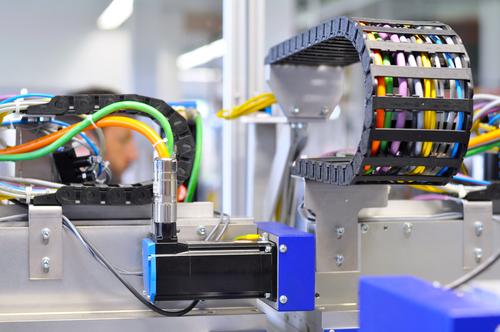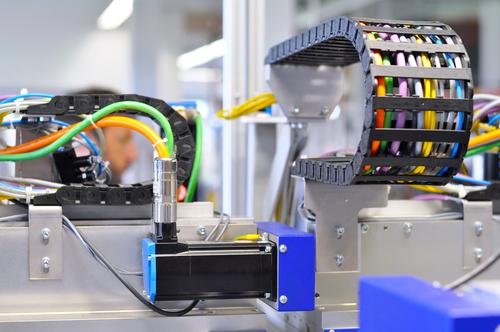Simplifying Cable Specification
December 3, 2013

Cables are a critical component on the factory floor, which makes it imperative that they perform well so all systems work properly. Regardless of the working conditions -- heavy mechanical load, extreme temperatures, or harsh oils and coolants -- properly specified cables are a crucial element to continuous machine uptime and reduced maintenance.
While the specifying process may seem long and arduous given the fact that cable construction can take on many different forms and configurations, it actually is simpler than it looks. Believe it or not, the bulk of cabling used in industrial automated manufacturing processes can be narrowed down by asking these specific questions.
Will the cable be used in a fixed (static) or flexing (dynamic) application?
For applications that are considered fixed, the specifier must know the installation space to determine the cable's bend radius if the cable is not installed flat or straight. Cables bent further than their recommended tolerances can fail due to physical breakdown (e.g. broken conductors, ripped jacket, etc.
However, if applications are dynamic -- such as continuously flexing applications that require the use of a cable track -- the length of the movement, acceleration, speed, and bending radius of the cable must be taken into account. Additionally, dynamic applications that involve torsional stress or twisting should take into account both the speed and torsion angle of the application. Doing so will ensure the proper manufacturing process, conductor stranding, insulation, and jacket materials are used to withstand the stresses and strains associated with the forces of cable movement.

What type of cable is required for the application?
Cables have specific functions, meaning they can't just be mixed and matched with the same results. The following are the cable types suited for industrial applications:
Control Cables: Used for on/off control in signal and control equipment. Such as relays, sensors, switches, and small motors.
Data Cables: Used for analog feedback and control for control equipment and motors. Good examples are computer interface, speed and data communication.
Single Conductor: Cables used to interconnect relays and controls in panels and conduits, known as hook-up wire, and act as the interconnection to motors and large power equipment, known as single conductor cable.
Motor, Servo, and Feedback: Cables used in interconnect; all motors including servo, variable frequency drive, DC, and squirrel cage motors.
Sensor Cables: Very similar to data cables but used to communicate analog or digital feedback and control of changes in speed, temperature, and other environmental elements.
Bus Cables: A subset of data cables used specifically for certain system protocol. Good examples are Industrial Ethernet, Profibus, and DeviceNet.
What insulation material is required?
Although the insulation is often overlooked, the correct selection of insulation does help in the performance of a cable both electrically and mechanically. The insulation is the material closest to the conductors. Considerations have to be made to insulation material used to provide proper performance of the cables.
Motors, especially VFDs, work better with a low capacitance cable that specifically matches the capacitance requirements of the motor. Polyethylene (PE) and cross-linked polyethylene (XLPE) are good options for this application.
Data cables also work better with low dielectric PE and polypropylene (PP) plastics that can be used as solid or foamed extrusions to provide a better dielectric material for low skew and high data rates.
High-flex cables require thin, high abrasion-resistant insulation to provide smaller track bend radius and still meet UL requirements. Compounds like thermoplastic polyester elastomers (TPEE) are good choices for these applications.
All cables that are used in dynamic applications need to consider environmental factors, especially temperature, to make sure there is not premature failure due to cracking and abrasion.
About the Author(s)
You May Also Like



.jpg?width=300&auto=webp&quality=80&disable=upscale)

